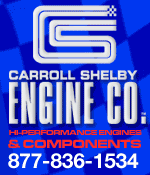Hello Stan,
RE: Carb size - Certainly the smaller carbs such as the 600-650's will lend themselves to 1:1 configuration and tuning than will the 800-850's.
D.I.R.T. - I've done a bit of work with DIRT South (a number of years ago now) and lately with Wissota / IMCA / STARS cars. Good series - tough rules!

Chassis Dyno: Yes an exceptionally valuable tuning tool. For years we tried to do "track tuning" on Shop Dynos and were only marginally successful, but we did have a higher ratio of repeatability than on the chassis dyno. Still the Chassis Dyno helps us make the car more driveable.
Vacuum signal: I guess it depends on your vantage point and what engine / carb combo you are using. Certainly closed throttle/high RPM will yield exceptionally high vacuum which will pull a lot of un-needed fuel from the idle circuits. I've been able to tune with air-bleeds to come up with happy mediums, but regardless of what we do, we'll never come up with something that works as well as EFI in part throttle operations.
Funny you should mention the fire balls belching from the exhaust. Not that many years ago when Tommy Kendall was winning everything in sight in Trans-Am, Jack Roush was playing with a device that was actually taking advantage of fuel in the exhaust systems. Imagine a 5" Venturi in a 6" exhaust pipe. Now , just downstream of that venturi, you inject a little fuel and a little air when the throttle is closed. The resulting fireball creates a negative pressure in the exhaust system in the middle of and on the "other" side of the venturi! This would actually help scavenge the exhaust and would make a pronounced improvement in off-corner throttle response.
If you were watching this effect on Tommy's car, you also noticed that about mid-season, it quit belching quite so much flame. Seems that Pro-Racing had a little talk with them about it. I can't help but imagine that it also had a negative impact on fuel economy.
Now if we could only solve the cold starting characteristics of of methanol - we could kick OPEC's butts and get off of gasoline altogether...
P.S. I started to mock-up a PV extension yesterday.



















 Linear Mode
Linear Mode



